Board Layout
The most striking aspect of the SR-2 is how humongous it is. Measuring a gargantuan 381 x 346mm, the SR-2 doesn’t adhere to any of the commonly accepted ATX standards. EVGA has named this form factor HPTX, but as the first such board of this shape and size your guess is as good as ours whether HTPX will catch on or not. Either way, the SR-2 is too large to fit inside most cases. To find out if your case is large enough to house an SR-2 head over to the EVGA website for this list of compatible cases.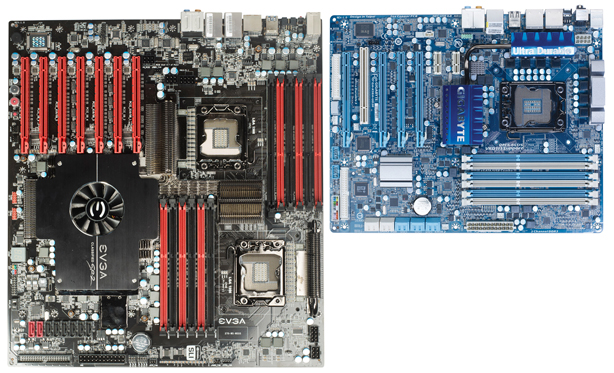
The SR-2 is a true monster, dominating standard ATX-size boards such as this Gigabyte GA-X58-UD3R. Click to enlarge
As the SR-2 allows you to overclock each CPU, EVGA has gone to town on the power circuitry. Each CPU socket has its own dedicated 8-pin EPS12V and 6-pin PCI-E connection while a third 6-pin PCI-E power cable is recommended if you populate the expansion slots with lots of graphics cards. This means that many PSUs simply don’t have enough power connectors to boot the SR-2, even if they provide enough watts.
Two Xeon CPUs consume a huge amount of power, especially when overclocked, so EVGA has also fitted the upper surface of the SR-2 with a mountain of heatsinks. These are so populous that despite the enormous size of the SR-2, they cluster very closely around the CPU socket, making it very hard to install the large CPU coolers.
As 5500- and 5600-series Xeons have a NUMA (Non Unified Memory Architecture), dual-socket LGA1366 motherboards provide each CPU socket with its own bank of dedicated DIMMs slots. In the case of the SR-2, each CPU socket is accompanied by six DIMM slots, with support for up to 48GB of memory. Unlike Core i7 CPUs, the memory controller inside Xeon CPUs supports both standard unbuffered DIMMs and registered ECC DDR3 memory. The latter is a better choice for a mission critical workstation or server, as it provides superior data integrity to unbuffered memory, albeit at a small (around two per cent) performance penalty. However, if you want to overclock the CPUs you’re best off using unbuffered memory, that way you can select one of the higher memory straps in the BIOS, yielding greater memory bandwidth.
Because the two CPU sockets and 12 DIMM slots take up so much real-estate on the right hand side of the SR-2, EVGA has been forced to locate all the controller chips close to another. This quartet comprises the Intel 5520 chipset, Intel ICH10R Southbridge and two Nvidia nForce 2 PCI-E controllers. All four chips huddle together under a massive heatsink that is cooled by a single 60mm fan. While the fan is pleasantly quiet, and doesn’t scream like a banshee as did the chipset fan on the Intel D5400XS, it barely has room to breathe if you install multiple graphics cards.
Unfortunately, EVGA didn’t bother to rotate the SATA ports parallel with the PCB for neat cabling, although it did at least provide a mixture of SATA 3Gbps, SATA 6Gbps and eSATA 3Gbps ports. You’ll also find 10 USB 2 ports and a pair of USB 3 ports dotted around the PCB, along with two Gigabit Ethernet ports.
There are some well thought out enthusiast features though, such as a bank of voltage monitoring points along the front edge of the PCB. The POST code display along the left hand edge is another great inclusion, something we wish more motherboards included. However, EVGA clearly didn’t read the Custom PC guide to designing motherboards, as the power and reset buttons are inaccessible if you install an expansion card in the seventh PCI-E slot.

MSI MPG Velox 100R Chassis Review
October 14 2021 | 15:04


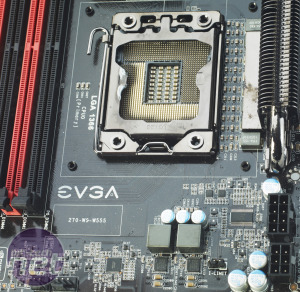
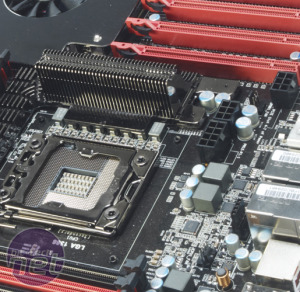
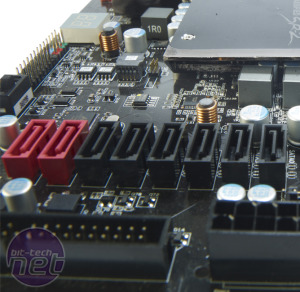
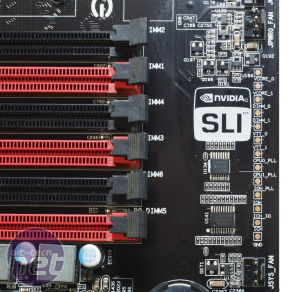








Want to comment? Please log in.